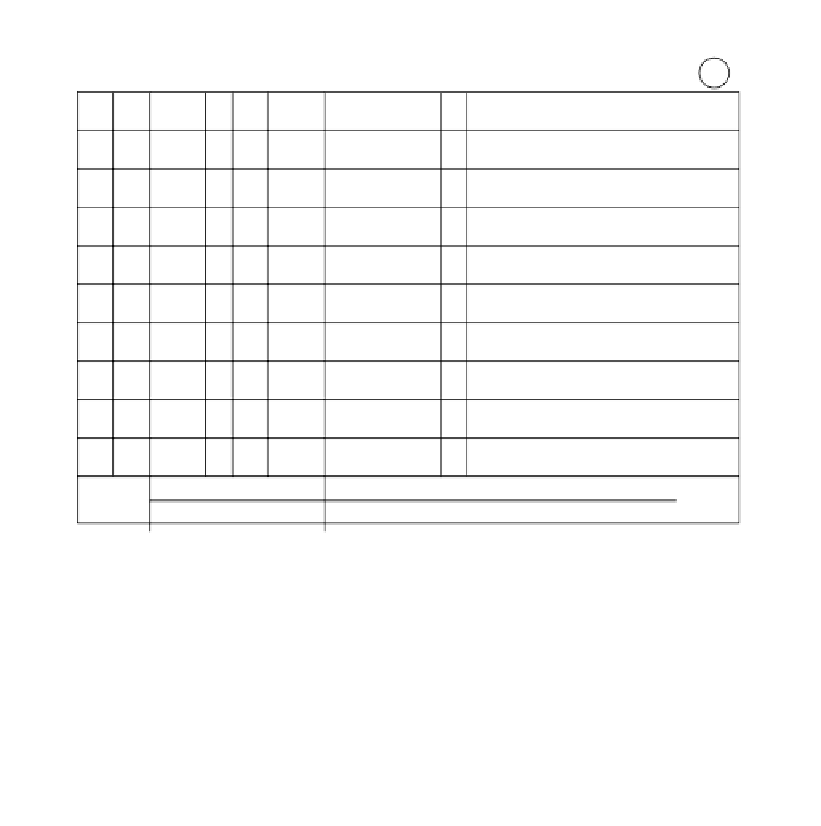Environmental Engineering Reference
In-Depth Information
AUSTRALIAN
STANDARD SIEVES
8A
100
0
10
90
8B
D85B
20
80
70
30
7B
60
40
50
50
2A
2B
40
60
30
70
6C
20
80
7A
6A
5
10
90
6B
0
100
CLAY
S I L T
S A N D
G R A V E L
Cobbles
Fine
Medium
Coarse
Fine
Medium
Coarse
Fine
Medium
Coarse
0.002
0.006
0.01
0.02
0.06
0.1
0.2
0.6
2
6
20
60
200
0.001
1
10
100
PARTICLE SIZE (mm)
Notes:
Step 1 - Particle size distribution for Zone 2A becomes the “Base Soil” - the fine side boundary is
critical. D
85B
15% passing 0.075 mm). Step 5 -
(5). Step 6 - Determine permeability criterion, D
15Fmin
2.5 mm. Go to Step 4. Step 4 - Soil is type 3 (
2% passing 0.075 mm
(6B), D
15Fmin
4D
15B
4 x 0.7 mm or
2.8 mm. However for average D
15
= 4
0.3 mm
1.2 mm accept this (6C). Step 7 - D
XFmax
/D
XFmin
less than 5 e.g. D
15Fmax
= 10 mm, therefore
D
15Fmin
2 mm (7A), D
60
/D
10
less than 6, so say D
10Fmax
6.7 mm, D
60Fmax
40 mm (7B);
Follow step 7 at 60% Passing when finalising grading. Step 8 - D
10F
0.1 mm, (6A),
7 mm, so max D
90F
50
mm from
Table 9.7
(8B).
Figure 9.27.
Example of design of a Zone 2B filter.
9.5.2.1
Standard tests for durability
Table 9.10
shows the specified durability requirements for several dams constructed in
Australia. Also shown for comparative purposes are the requirements for fine and coarse
concrete aggregates as specified by Standards Association of Australia (1985).
These specifications can be used as a guide to selecting reasonable limits. The following
comments are offered:
(a) The Los Angeles abrasion and wet strength, wet/dry strength variation tests largely
assess the susceptibility to breakdown under the mechanical action of placement and
rolling in the dam. It can be seen that dam specifications are generally less stringent
than AS2758.1. If materials test marginally within the specification it would be advis-
able to carry out field compaction trials of the filters, to observe directly the degree of
breakdown under rolling and the size of the “broken down” product. It may be prac-
ticable to make design changes, e.g. wider or thicker filters, to accommodate the
breakdown.
(b) The Sodium Sulphate soundness test assesses the susceptibility to breakdown under
wetting and drying, with the added involvement of sodium sulphate in the solution























































